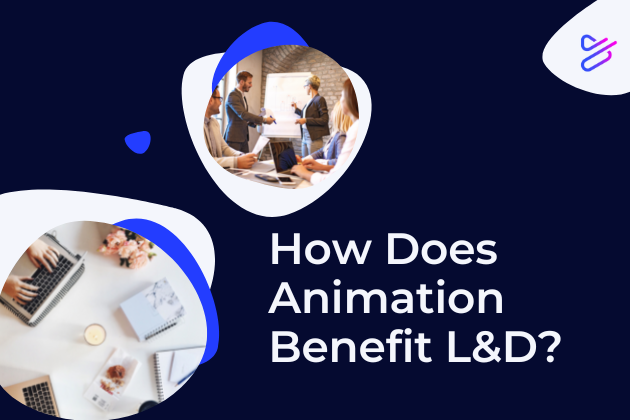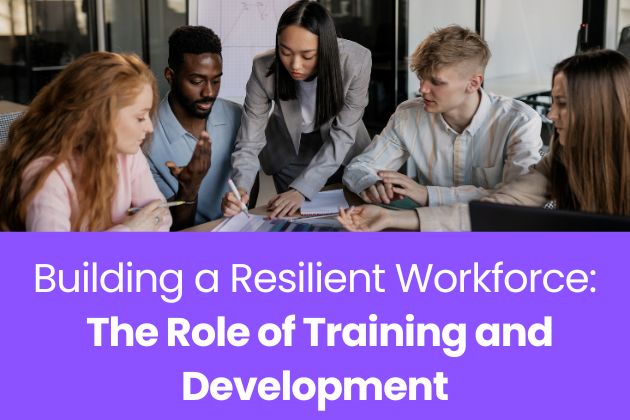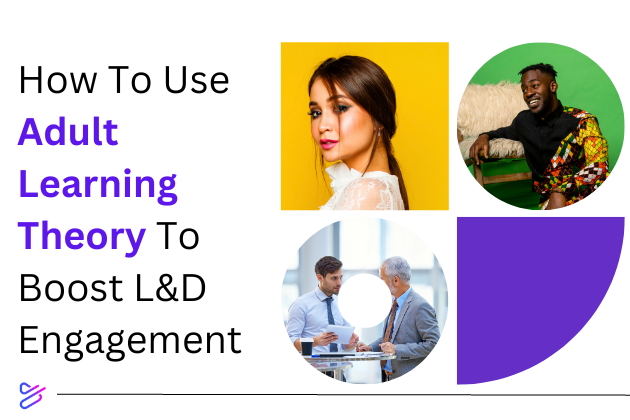
How Does Animation Benefit Learning And Development
Have you ever watched an animation video and found yourself completely engrossed in the story? Animation has the power to captivate by bringing complex ideas to life. It’s no wonder that animation has become a valuable tool in learning and development (L&D). In this blog post, we’ll dive into how animation can benefit L&D initiatives and explore some exciting possibilities for the future.
What is Animation?
Animation refers to the process of creating the illusion of motion and change by displaying a sequence of static images that minimally differ from each other. It is a technique that involves creating moving images by manipulating drawings, photographs, or computer-generated graphics. Animations are used in a variety of contexts, including entertainment, advertising, education, and more.
History of Animation
From the pottery of ancient Greece to the ocular toys of the seventeenth century, the art of animation has taken many forms throughout the centuries. It has evolved and advanced enormously and turned into the beautifully computer-generated imagery (CGI) we see today. The history of animation is a testament to the ingenuity of humans and their ability to create incredible works of art and entertainment.
Animation For L&D
It was not until the early 1960s when digital computers had become widely established, that new opportunities for innovative computer graphics emerged. While their initial uses were mainly for scientific, engineering, and other research purposes, artistic experimentation with computer graphics began to emerge by the mid-1960s. With the advent of digital technology, the possibilities for animation in learning and development have continued to expand, allowing for more accessible and engaging educational experiences. With the advent of tools like Powtoon, creating animated videos for L&D has become even more accessible to creators and organizations alike.
The Science Behind Animation and Learning
Animated videos are a powerful tool that can significantly enhance learning and development initiatives. By using visual aids and storytelling techniques, animation can help learners understand complex or abstract concepts more easily, improving their memory retention. By capturing learners’ attention and making the learning experience more enjoyable, animated videos can increase motivation and engagement. Animation offers a unique and dynamic way to communicate important information, making it a valuable tool for anyone interested in promoting effective learning and development.
Advantages of Animation in Learning and Development
One of its key advantages is its ability to make abstract concepts more concrete and relatable, helping learners understand and retain information more effectively. Additionally, animation offers a high degree of flexibility, allowing learners to access and engage with the material at their own pace and on their own terms. Through reinforcement of ideas and interactivity, animation can also help learners retain information more effectively and engage with the material in a more meaningful way. Finally, the potential to appeal to different learning styles makes animation an ideal tool for organizations seeking to create inclusive and effective learning and development programs.
Animation in Corporate Training
Animation offers a memorable and engaging way to teach and convey information, making it a powerful tool for training and development initiatives. By simulating real-world scenarios and creating immersive learning experiences, animation can help learners develop practical skills and knowledge that they can apply in their work.
L&D Video Examples
Animated Tutorials:
- Software training: An animated tutorial can be used to teach employees how to use new software programs. Demonstrate how to use a new customer relationship management (CRM) system or accounting software.
- Safety training: Animated tutorials can be used to train employees on workplace safety procedures, such as how to properly use personal protective equipment (PPE) or how to respond to an emergency situation.
- Compliance training: You can use an animated video to train employees on legal or regulatory requirements. Explain the company’s anti-harassment policy or how to comply with data privacy regulations.
- Product training: Train your employees on new products or services.
Emergency Respondance:
- Fire safety: Create an animation that demonstrates the proper procedures for a fire emergency. You can include how to use fire extinguishers and how to evacuate the building safely.
- Natural disasters: How do we respond to natural disasters, such as earthquakes or hurricanes? Teach employees how to seek shelter and what to do in case of injury.
- Medical emergencies: What are the proper procedures for responding to medical emergencies such as heart attacks or allergic reactions? Teach your employees how to administer first aid and how to contact emergency services.
- Workplace violence: Demonstrate the proper procedures for responding to workplace violence, including how to recognize warning signs and how to protect oneself and others from harm.
Explainer Videos:
- Company policies and procedures: Introduce new employees to company policies and procedures, such as workplace safety, security protocols, and human resources policies.
- Product training: Train employees on how to use a new product or software, demonstrating its features and capabilities.
- Compliance training: Explain to your audience the legal and regulatory compliance requirements, such as anti-bribery laws or data privacy regulations.
- Sales training: Train the sales teams on new products or sales techniques, and show them how to effectively communicate with customers so they can close sales.
When used in corporate training settings, animation can help learners master new concepts and skills, making it an indispensable tool for anyone seeking to promote effective learning and development.
How to Create Animations for L&D
Follow these key points to create effective animation for L&D:
- Outline: Before you start animating, create an outline to make sure your overall message is clear and easy to follow.
- Keep it short: Take advantage of the power of micro-learning and make sure your video isn’t too long. It’s always better to break up your content into a few parts than to mush it all together into one long lesson.
- Animated characters: Don’t be afraid to use characters when you are teaching. Involving characters in your storyline helps your audience resonate with your content and makes your videos feel more interactive.
- Simple Wording: Avoid using too many technical words to prevent overwhelming viewers.
- Less is more: Don’t overdo animations and text – consider using a voiceover instead.
- Timing and Spacing: Ensure that the animation moves at an appropriate pace that is neither too fast nor too slow.
- Accessibility: Include accessibility features such as captions and high-contrast visuals to make your L&D videos accessible to everyone.
By following these tips, L&D professionals can create engaging and effective animations that effectively communicate their message to their learners.
How Leading L&D Teams Are Using Powtoon
Animation is a powerful tool that helps captivate and engage learners. Powtoon allows L&D professionals to create high-quality and engaging animations for learning and development and has made a significant impact on companies worldwide. Clients such as Wiley, Foot Locker, and Nestle have testified to the effectiveness of the software in engaging learners, saving time, and increasing productivity. Wiley uses Powtoon to create educational, bite-sized videos that help build an engaged learning community of over 8,000 employees. Foot Locker has replaced static papers with diverse videos and trains 35,000 employees across 27 regions with experiential micro-learning. Nestle creates engaging training materials faster using Powtoon to streamline compliance through branded videos made in just a few clicks. Powtoon’s easy-to-use tools enable L&D professionals all over the world to create engaging animations that can effectively communicate complex ideas and improve learner outcomes.
Elevate Your Learning And Development with Animation
Animated videos have revolutionized the way L&D is delivered in today’s digital age. Its range of benefits, includes enhanced engagement, increased retention, and improved accessibility for learners. Animated text and characters help simplify complex concepts and ideas, making them easier to understand and apply in real-life scenarios. By incorporating animation into your L&D programs, you can create a more immersive and interactive learning experience that resonates with your audience and promotes better learning outcomes. Powtoon makes it easy to create high-quality animations that are both informative and entertaining. Sign up today and revolutionize your learning content.







